Highlights of my participation in the 26th General ICOM Conference, Prague, Czech Republic (Norhan Hassan Salem, Egypt, ITP 2017)
Written by Norhan Hassan Salem, Exhibitions and Cultural Events’ Coordinator, Egyptian Museum, Cairo (Egypt, ITP 2017)
After two years of pandemics without any in-person conference, we all looked forward to on-site events! This year I had the luck to travel abroad two times after my last trip to Paris in February 2020. The First trip was to Tallinn, Estonia to attend the annual meeting of ICOM-CIDOC 2020 which was held last May. And the second trip was to Prague, Czech to attend the triennial ICOM General Conference from 20th: 28th August 2022.
I was granted by ICOM-ICMAH to present two papers; the first one with ICOM-CIPEG, it is a part from my master’s thesis and entitled: The presentation of Jewellery on Four Greco-Roman Cartonnage Mummies and their Influence on Modern Culture. The other paper with ICOM-ICMAH with the collaboration of two other colleagues: Heba Khairy Metwaly and Asmaa Ahmed Moawed, entitled: The Repatriation of Egyptian Heritage: Obstacles and Challenges.
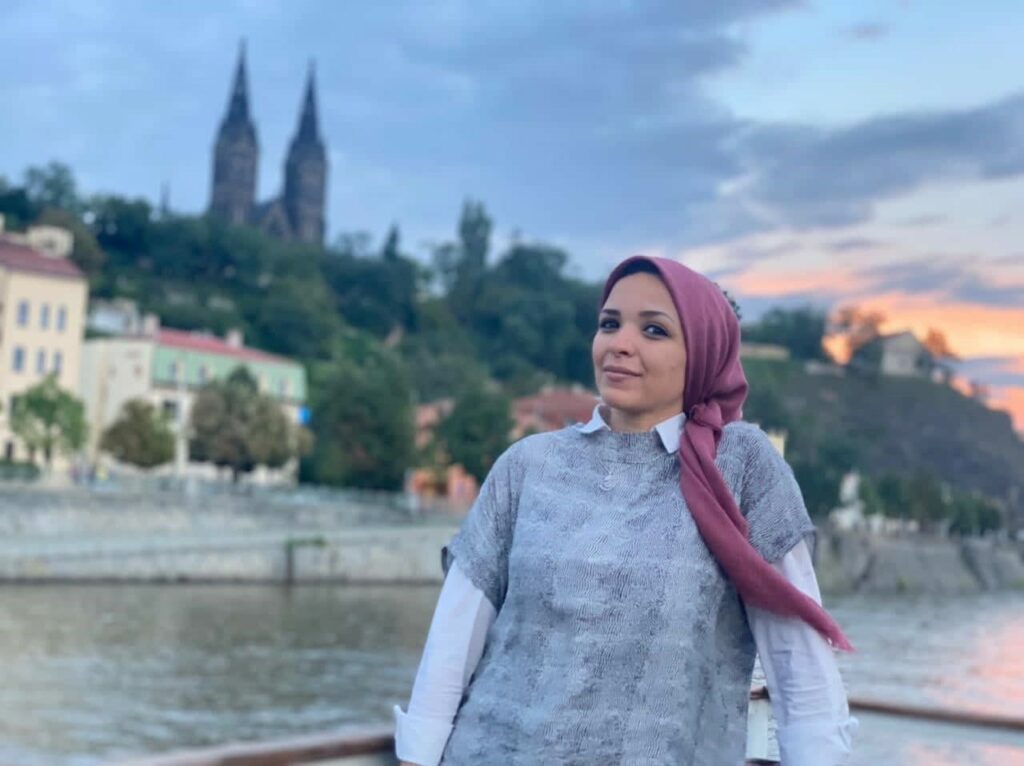
During a trip in Vltava River.
I was thrilled to see the speakers’ names and titles of the talks when I reviewed the schedule of the conference in general. I would like to pursue my future academic path in those domains. So, overall the talks I attended inspired me! I had a chance to get to know people, share skills and experiences, and understand and learn new things! I was planning to attend so many sessions and listen to different talks as there were several talks going in parallel!
During the CIPEG meetings, we have a great day in the Faculty of Arts – East and Central European Studies – at Charles University attending very interesting lectures in Egyptology.
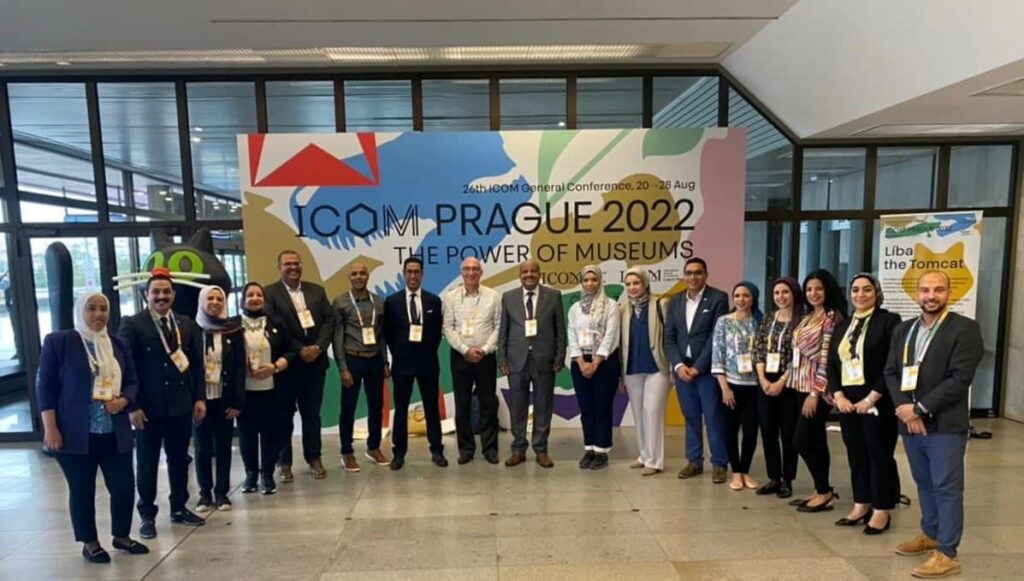
ICOM Egypt Delegations presence at the 26th ICOM General Conference
This year I also have been awarded the Best Practice 10 from ICOM-CECA 2022 and published the proposal for the workshop entitled “You can see with your Hands”, which was held at the Egyptian Museum in Cairo in October 2016 on the side-lines of an exhibition of the same title – in the tenth version of the book entitled: “Best practice 10, A tool to improve museum education internationally”. I am one of the two Egyptian awardees this year, and we are the only two since the award began in 2012.
Overall, I really enjoyed attending the conference and had a great opportunity to meet and socialise with other ITP fellows, such as: Wesam Mohamed, Sayed Abo Elfadl, and Nevine Nizar from Egypt, Beimote Ngozi from Nigeria, Hayk Mkrtchyan and Davit Poghosyan from Armenia, Rema Zeynalova from Azerbaijan, Yanoa Pomalima Carrasco from Peru. I have also met Dana Andrew from ICOM UK for the first time, which was a great pleasure.
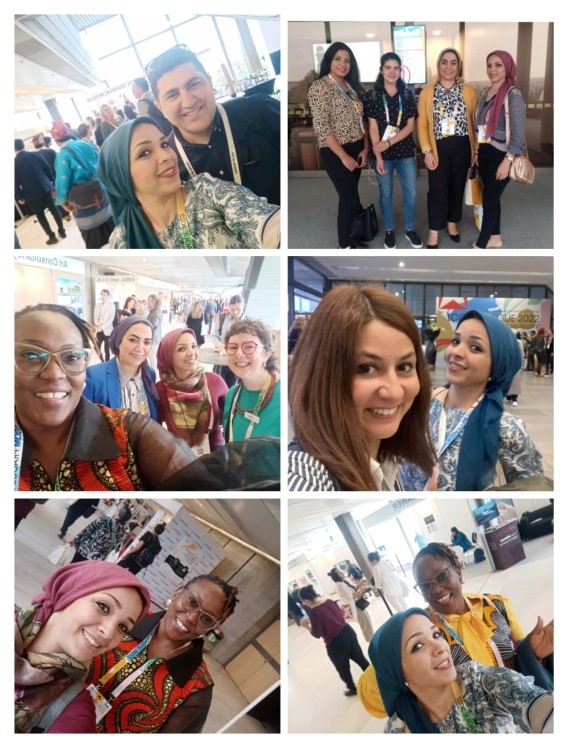
With other ITP fellows during the 26th General ICOM Conference.
Czech is a beautiful European country, and Prague is an impressive medieval city; it contains 11 world heritage sites. I have enjoyed the daily walk in the Historic Centre of Prague, which is recorded as a UNESCO world heritage site in 1992, its buildings were constructed between the 11th and 18th centuries. The most highlighted monuments of the Historic City are the Old Town, the Lesser Town, the New Town, St Vitus Cathedral, Hradcany Castle, Charles Bridge, including Pruhonice Castle and Gardens, and many churches and palaces that most of them are dating back to the reign of the Roman Emperor Charles IV in the 14th Century.
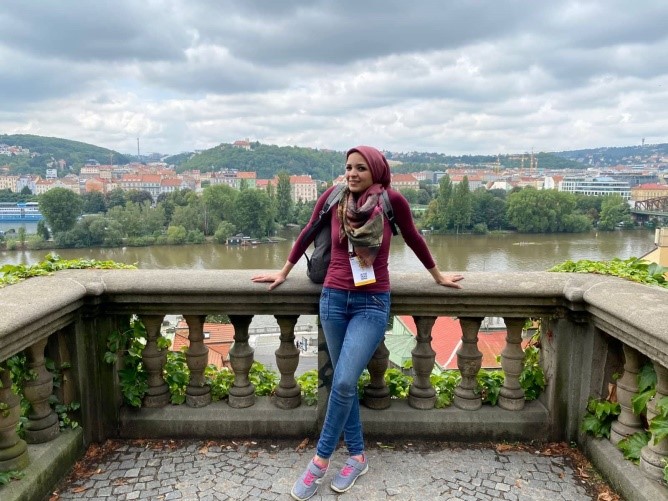
With a view of the landscape of Prague
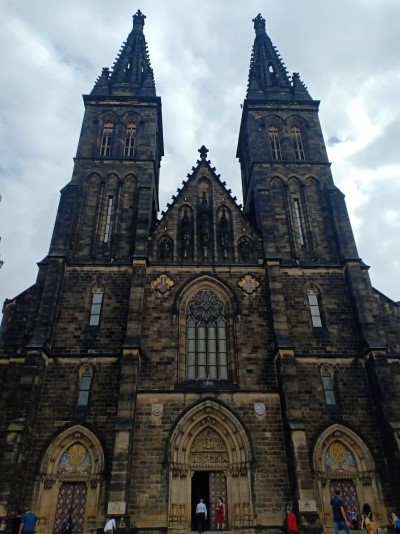
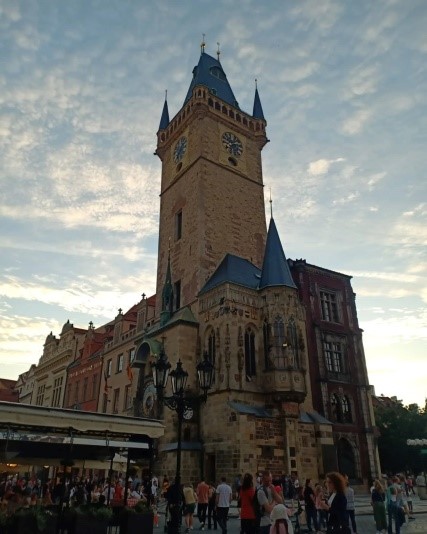
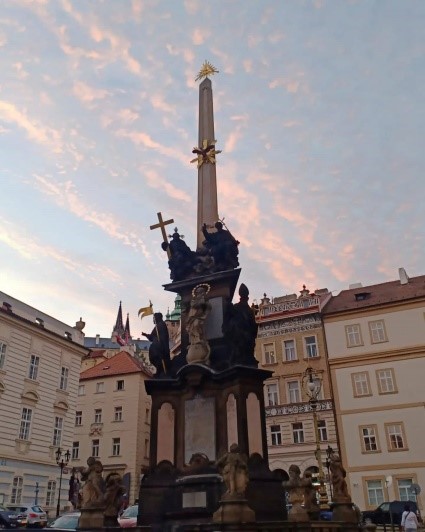

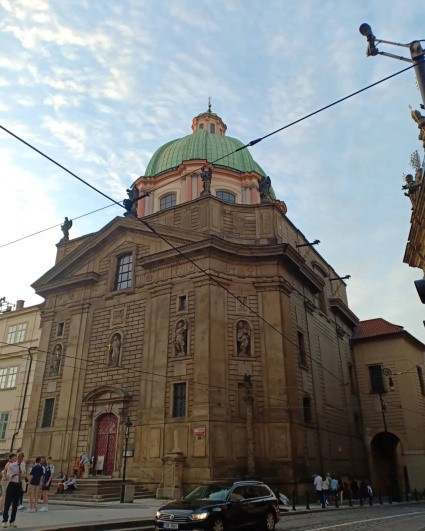
Shots from the Historic Centre of Prague.
I have also visited many places such as Saint Peter and Paul Basilica, Prague Christian Cemetery, Prague Castle, and Tyn Church. In addition to visiting different categories of museums in Prague, such as the Spanish Synagogue – Jewish Museum as a religious museum, the National Museum of Prague as a historical museum, National Technical Museum Prague with its extensive collections documenting the development of many technical disciplines and a variety of vehicles, such as “Škoda” the Czech cars brand, and the Stone Bell House – Prague City Gallery.
I have visited the historic town centre of Kutná Hora in the Central Bohemia Region; it is listed as a UNESCO World Heritage Site in 1995. This part of the Republic is known for its silver mining activity. It is a well-preserved medieval ground plan because it became the Royal city in the 14th century. I have visited the Church of Saint Barbara dating back to the late Gothic period, and the Cathedral of our Lady at Sedlec which is a perfect example of the Baroque taste of the early 18th century.
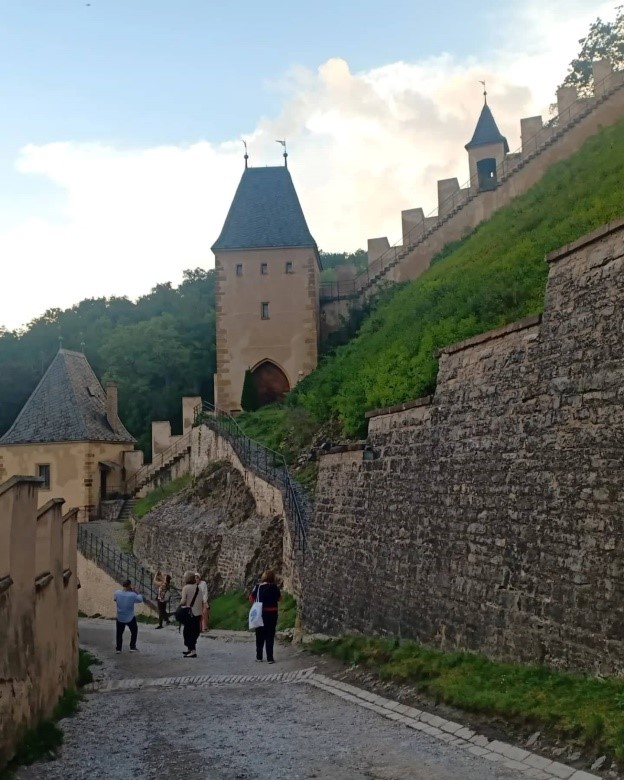
The historic town centre of Kutná Hora
The conference has provided us as participants with the opportunity to choose a place to travel through the excursions; I have decided to travel to Brno in the South Moravian Region by the historical train. I have visited there the Anthropos Pavilion Museum which interprets the ancient history of Europe and the human there, and the Ethnographic museum which is hosted by the Nobel Palace. Its collection focuses on traditional Moravian culture from the 18th century to the present. It contains costumes, music and musical instruments, furniture, tools, photos, films, marionette toys, and other material culture of the inhabitants.
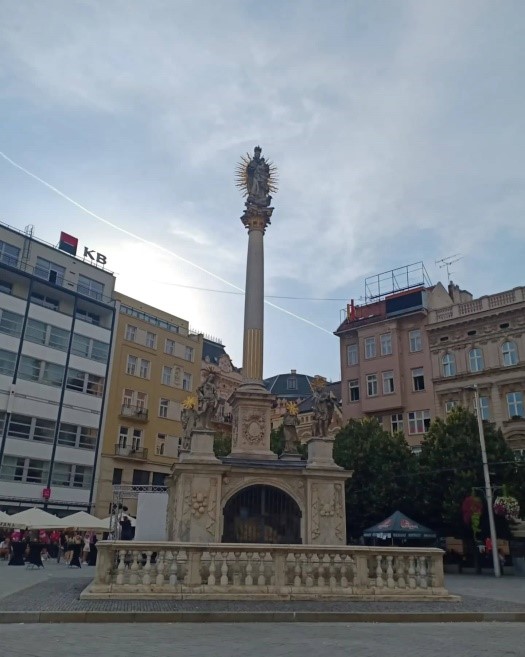
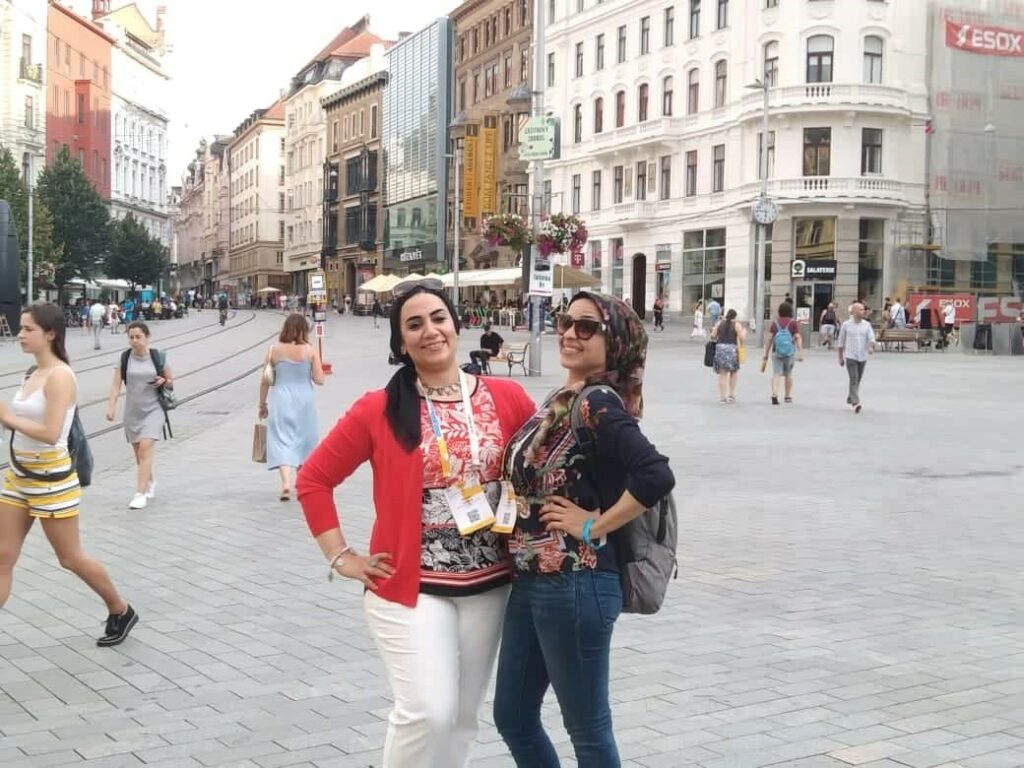
With Nevine Nizar (ITP 2012) in Brno.
On my way to the Czech Republic, I travelled via Greek airway, with about 8 hours for transit in Athens. I have found this a big chance to go out of the airport to visit the Acropolis and the Acropolis Museum, then to walk in the city and discover its landmarks. The Acropolis is a very ancient classical Greek architectural complex constructed on a rocky hill more than 150 meters above sea level, and considered as a UNESCO World Heritage Site in 1987. It contains a series of monuments such as the Parthenon which was built by Ictinus, the Erechtheion (Temple of Athena Polias), the Propylaia (the classical Greek Doric building complex as a gateway into the Acropolis that was designed by Mnesicles), The Sanctuary of Zeus Polieus, Odeon of Herodes Atticus, and the small temple Athena Nike. It was one of my dreams to go to this site, and the dream finally came true.

Odeon of Herodes Atticus in Acropolis.

The small temple Athena Nike
I have tried a variety of food there along the way; the Czech kitchen seems – to me – professional. I find the Ice-Cream very tasty and the bakeries delicious.

Alexander the Great head in Acropolis Museum.
